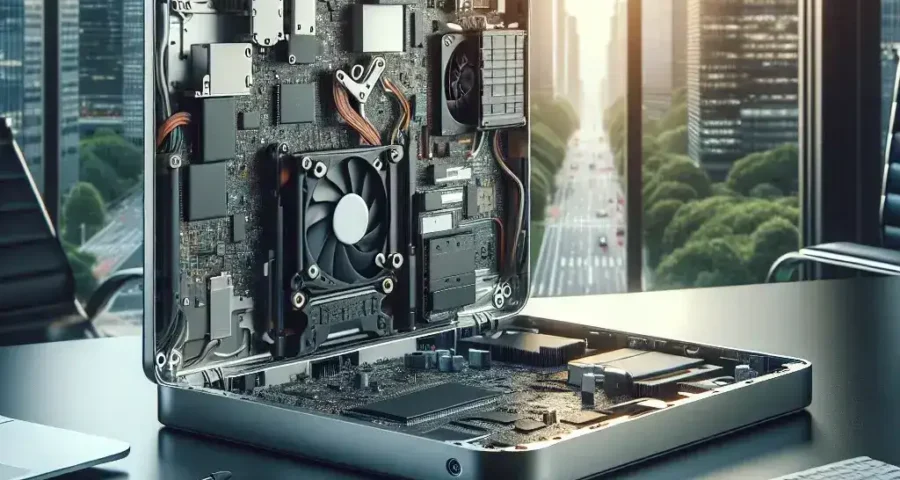Introduction
In recent years, the landscape of enterprise computing has evolved rapidly. One of the most significant movements within this transformation is the rise of repair-first devices. These devices, designed with repairability in mind, have become increasingly attractive to businesses seeking to optimize their operations while promoting sustainability. In this article, we will delve into the various factors that make repair-first devices appealing for enterprise computing, examining their benefits, challenges, and future implications.
Understanding Repair-First Devices
Repair-first devices are technology products that prioritize ease of repair over disposability. This means that rather than being designed with a limited lifespan, these devices are built to be easily disassembled, repaired, and upgraded. This concept aligns with the growing trend of sustainability in technology, where businesses are seeking ways to reduce electronic waste and extend the life of their equipment.
The Importance of Repairability
The importance of repairability can be highlighted through several key factors:
- Cost Savings: Repair-first devices often result in lower maintenance costs. Instead of replacing an entire machine, businesses can repair specific components, which is more economical and can lead to significant cost savings over time.
- Reduced Downtime: When devices can be easily repaired, the downtime associated with malfunctions decreases. This is crucial in a business environment where every minute counts.
- Sustainability Efforts: By opting for repair-first devices, enterprises contribute to reducing electronic waste, a growing concern in today’s world.
- Enhanced Customization: Repair-first devices often allow for easier upgrades and customization, enabling businesses to tailor their technology to evolving needs.
The Historical Context of Repair-First Devices
The concept of repairability in technology has historical roots. In the early days of computing, devices were built with a focus on repair and maintenance. However, with the advent of sleek designs and the consumer electronics boom, manufacturers shifted towards creating products that were often difficult to disassemble and repair. This trend resulted in a throwaway culture, where devices were discarded rather than fixed.
In response to growing concerns about waste and sustainability, a counter-movement emerged advocating for repairability. Organizations and individuals began championing the right to repair, influencing manufacturers to reconsider their design processes and prioritize repair-first principles.
Benefits of Repair-First Devices in Enterprise Computing
Repair-first devices offer a plethora of advantages for businesses. Here are some compelling benefits:
1. Cost Efficiency
One of the most significant reasons enterprises gravitate towards repair-first devices is cost efficiency. For example, if a laptop’s battery fails, instead of purchasing a new laptop, a business can simply replace the battery. This not only saves money but also minimizes financial waste.
2. Environmental Responsibility
With environmental concerns at the forefront of global discussions, businesses are increasingly aware of their carbon footprint. By choosing repair-first devices, corporations can contribute to sustainability efforts while fulfilling corporate social responsibility goals. The long-term impact on the environment is reduced electronic waste, which is crucial for a healthier planet.
3. Enhanced Productivity
Minimizing device downtime is crucial for maintaining productivity in any enterprise. Repair-first devices enable quicker repairs, which helps minimize disruptions. For instance, consider a scenario where a team relies on specialized equipment for their daily tasks. If that equipment breaks down, the ability to repair it quickly can significantly impact overall efficiency and output.
4. Improved Employee Satisfaction
When employees have access to reliable and easily repairable devices, their overall job satisfaction can increase. Employees waste less time dealing with malfunctioning equipment and can focus on their tasks. Furthermore, a commitment to sustainability can foster a positive workplace culture.
Challenges of Repair-First Devices
While the advantages are compelling, some challenges exist when integrating repair-first devices in an enterprise setting. These challenges include:
1. Initial Costs
The upfront costs of acquiring repair-first devices may be higher compared to non-repairable alternatives. However, the long-term savings can outweigh these initial investments.
2. Availability of Parts
For repair-first devices to be truly effective, the availability of replacement parts is essential. Enterprises must ensure that parts are accessible and that they can establish relationships with suppliers to facilitate repairs.
3. Training and Expertise
Repairing devices requires a certain level of technical expertise. Enterprises may need to invest in training for their staff or hire specialized technicians to handle repairs effectively.
Future Predictions for Repair-First Devices
As the demand for sustainable practices in technology grows, the future of repair-first devices looks promising. We can expect:
1. Stricter Regulations
Governments worldwide are beginning to implement regulations to promote repairability and sustainability in technology. This could lead to a broader adoption of repair-first devices across various sectors.
2. Technological Innovations
As manufacturers respond to market demand, we can anticipate significant innovations in the realm of repair-first devices. New designs and materials may emerge that further enhance repairability.
3. Increased Awareness
Awareness of the benefits of repair-first devices is likely to grow among consumers and businesses alike. This could lead to a shift in purchasing decisions, with more enterprises prioritizing repairability in their technology acquisitions.
Real-World Examples of Repair-First Devices
Several companies have successfully implemented repair-first devices in their operations:
1. Fairphone
Fairphone is known for creating smartphones designed with repairability in mind. Their modular design allows users to replace parts easily, promoting sustainability.
2. Framework Laptop
The Framework Laptop is another exemplary model, allowing users to repair and upgrade their devices with ease. This product has garnered significant attention for its user-centric design.
Conclusion
In conclusion, repair-first devices represent a significant shift in the enterprise computing landscape. Their advantages in cost efficiency, sustainability, and productivity make them appealing to businesses looking to innovate while minimizing their environmental impact. While challenges remain, the future of repair-first devices looks bright, promising a more sustainable and responsible approach to technology in the enterprise sector.


Leave a Reply